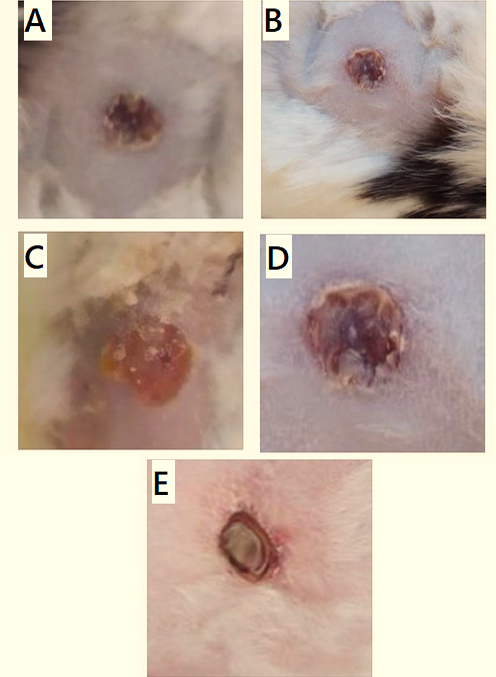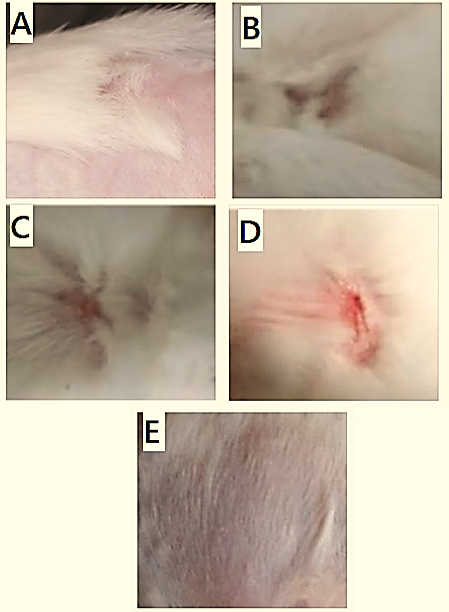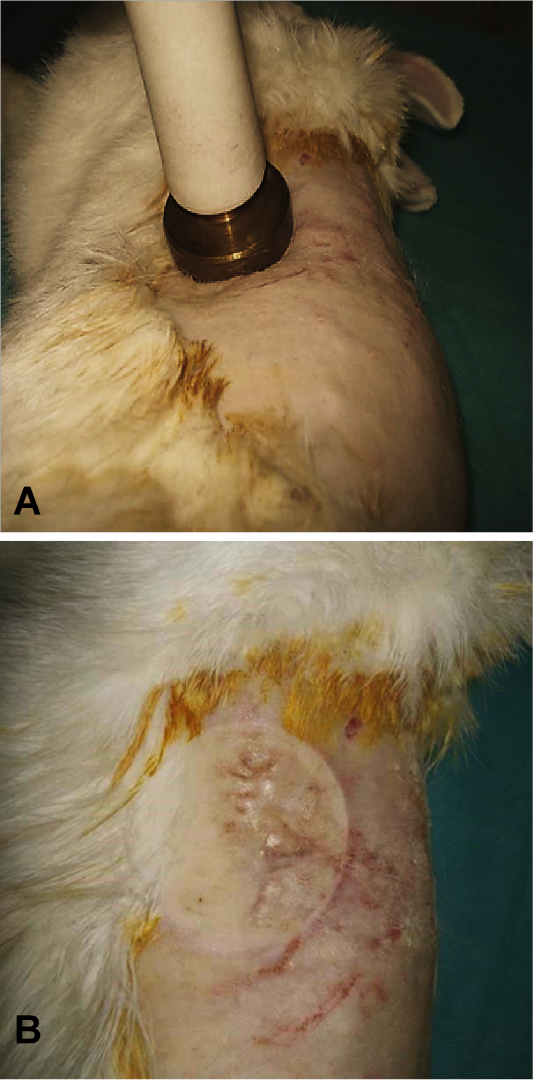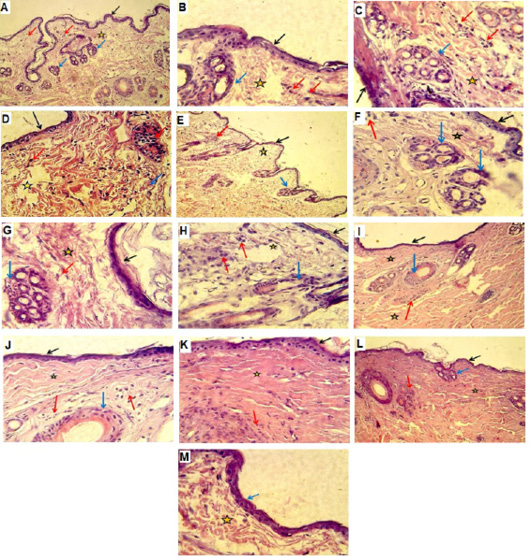Assessing Wound Healing Diameter and Morphological Change in Rabbits: The Impact of Lidocaine, Remifentanil (With and Without Adjuvants), and Tramadol in Burn Wound Healing
Assessing Wound Healing Diameter and Morphological Change in Rabbits: The Impact of Lidocaine, Remifentanil (With and Without Adjuvants), and Tramadol in Burn Wound Healing
Nabaa Fadhil Abbas*, Raffal A. Omar
Assessment of wound healing in circular wounds with a 5 cm diameter in various experimental groups of rabbits. treated with (A) Tramadol on 7th day after burn. The diameter was 4.1cm (B) Remifentanil group, had an average diameter of 4.3 cm. (C) Lidocaine group, the average burn diameter was 3.3 cm (D) Remifentanil with epinephrine average burn diameter was 3.1 cm (E) Remifentanil with gel. The average diameter of the burned skin was 3.1 cm.
Wound healing process in rabbits at the 14-day. The (A) Lidocaine group the average burn diameter was 1.80cm (B) Tramadol group, resulting in an average burn diameter of 2.80cm. (C) Remifentanil group ,the average burn diameter was 2.6 cm (D) Remifentanil with gel group , resulting in an average burn diameter of 1.5cm (E) Remifentanil with epinephrine the burned skin had an average diameter of 1.6 cm.
Assessment of wound healing in circular wounds with a 5 cm diameter in control groups of rabbits. (A) On 7th day after burn. The diameter was3.0cm (B) after burn wounds done (control groups).
Post-treatment histopathological examination of rabbit skin revealed varying effects depending on the treatment used. At 7 days, treatments with R and Lidocaine resulted in minimal changes, with mild degeneration of dermal collagen fibres and new hair follicle formation. Remifentanil treatments showed little inflammatory cell infiltration but no new hair follicles as A,B,C,D respectively. By 14 days, Remifentanil with gel showed moderate inflammation and collagen fibre depletion, while Lidocaine, Tramadol, and Remifentanil treatments showed minimal changes as in E,F, G,H respectively . At 21 days, Tramadol and Remifentanil treatments showed little inflammation and normal collagen fibers, while Lidocaine treatment showed no inflammatory reaction and normal mature dermal collagen fibers in I, J, K, L, M, respectively.










